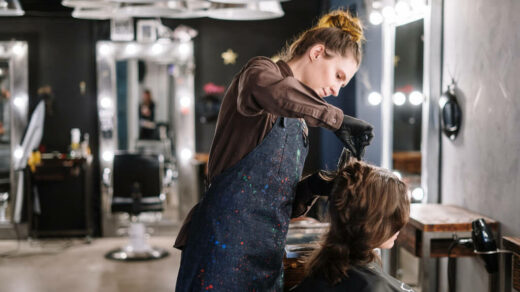The Marilyn Monroe Size Legend
The legend of Marilyn Monroe’s size being 12-16 is as enduring as her iconic status. It’s a story often told, echoing sentiments from celebrities like Roseanne Barr and Elizabeth Hurley. But how true is it? Was Monroe really the same size as the average American woman today? Let’s dive into the facts and shatter some long-held myths.
Unraveling the Monroe size myth is like peeling an onion, layer by intriguing layer. One theory suggests that it stemmed from Monroe’s unique hourglass figure. However, the more substantial cause seems to be the evolution of women’s sizes. In the 1980s, the U.S. Department of Commerce discarded a uniform sizing system, making today’s sizes incomparable to those of the 1950s. Surprisingly, a size 8 today would have been a size 16-18 in Monroe’s era.
To get to the heart of Monroe’s true size, we turn to her preserved dresses and the words of her dressmaker. Monroe’s measurements were quite specific: a height of 5 ft. 5.5 inches, a bust of 35 inches, a waist of 22 inches, hips of 35 inches, and a bra size of 36D. Her weight fluctuated, often in response to her personal struggles, but typically hovered around 115-120 lbs. These figures paint a different picture than the size 12-16 narrative.
Translating Monroe’s size into today’s fashion landscape is tricky due to varying sizes across brands and countries. Her hourglass shape adds another layer of complexity. Fortunately, Monroe often opted for custom-made clothing. For instance, the iconic white dress from “The Seven Year Itch” couldn’t fit a size 2 mannequin, indicating her smaller size. Yet, due to her preference for tightly fitted dresses, a size 4 (U.S.) or 8 (U.K.) would be more realistic for her.
How does Monroe’s size compare to contemporary fashion models? The average model today has measurements close to Monroe’s 35-22-35, but with a taller frame. Interestingly, Elizabeth Hurley, who famously criticized Monroe’s size, shares similar body dimensions, albeit taller. This comparison highlights the unrealistic standards set by the fashion industry, both in Monroe’s time and today.
The Changing Standards of Beauty and Size
The disparity between the sizes of models and the average woman has only widened over time. In the 1950s, the gap was less pronounced, with the average American woman having a 25-inch waist compared to Monroe’s 22 inches. Today, that average has increased to 34 inches. Moreover, modern photo and video editing techniques exacerbate this divide, creating unattainable standards of beauty.
Interesting Points
One of the most striking aspects of Monroe’s personality was her intellectual pursuits. Known for her intelligence and love for reading, she possessed an extensive library of over 400 books. Her collection spanned a wide range of genres, with a particular fondness for literature and philosophy. This love for reading was not just a pastime; it reflected her deep desire for knowledge and understanding, contrasting sharply with the often one-dimensional public perception of her.
Monroe’s artistic aspirations extended beyond the silver screen. She was passionate about writing poetry and kept journals filled with her thoughts and musings. These writings provide a window into her inner life, revealing a reflective and contemplative nature. Additionally, Monroe enjoyed painting, further showcasing her artistic inclinations and desire for creative expression.
Her journey to stardom began with a significant change; born Norma Jeane Mortenson, she later transformed into Marilyn Monroe, adopting her grandmother’s maiden name. This name change marked the beginning of a new identity and a storied career in Hollywood.
Monroe’s personal life was marked by challenges from an early age. She was married at just 16 to James Dougherty, a union arranged to prevent her from returning to an orphanage. This early marriage, although short-lived, was a pivotal moment in her life, setting her on a path that would eventually lead to her becoming an international icon.
Her dedication to her craft was evident in her ambitious training as an actress. Monroe took acting seriously, attending classes at the prestigious Actors Studio in New York. She studied method acting under the renowned Lee Strasberg, honing her skills and deepening her understanding of the art. This commitment to acting demonstrated her desire to be seen as a serious actress, not just a Hollywood starlet.
Monroe’s talents were not confined to acting alone; she also had a notable singing career. Her sultry voice was famously showcased when she sang “Happy Birthday, Mr. President” to John F. Kennedy in 1962, a performance that has since become a part of American cultural history.
In a groundbreaking move for a woman in her era, Monroe started her own production company, Marilyn Monroe Productions. This venture, which produced films like “The Prince and the Showgirl,” marked her as a pioneering figure in Hollywood, challenging the male-dominated industry norms.
Throughout her life, Monroe faced mental health struggles, including depression and anxiety. She sought help through psychoanalysis, a step that was quite progressive for the time. Her openness about her mental health issues helped to destigmatize such discussions, particularly in Hollywood.
Monroe’s social circle included significant figures like jazz legend Ella Fitzgerald. She used her influence to help Fitzgerald overcome racial barriers in the entertainment industry, insisting that clubs book the talented singer. This act of friendship and advocacy highlighted Monroe’s awareness of social issues and her willingness to use her status for positive change.
Lastly, Monroe’s talent as a comedian is often underappreciated. Typecast as a “dumb blonde,” she was in reality a gifted comedian. Her performances in films like “Some Like It Hot” showcased her impeccable timing and delivery, earning her critical acclaim.
Continued Pop Culture Relevance
Monroe remains a significant figure in pop culture, inspiring people across different sectors. Her movies were top-grossing, and even today, they are considered essential pieces of pop culture, having grossed $2 billion collectively.
Her influence extends beyond films to other art forms, inspiring art, cosmetics, clothing brands, and custom dresses. Her image is frequently used by brands and in magazines. The Marilyn Diptych by Andy Warhol is one of the most recognized art pieces featuring Monroe, symbolizing her enduring presence in modern art.
Role Model and Idolization
Many young people idolize Monroe for her looks and body, often emulating her style and demeanor. Her influence in fashion and sense of style is utilized by designers worldwide.
Influence on Modern Celebrities
Monroe’s performances and style have inspired homages by many modern celebrities, such as Madonna, Nicole Kidman, Ariana Grande, and others, indicating her lasting impact on contemporary popular culture.
Positive and Negative Aspects
The positive aspects of Monroe’s influence include her resilience, artistic talent, and breaking of societal norms. However, there are also negative aspects, such as the potential for unrealistic body image standards and the glamorization of her personal struggles.
Marilyn Monroe’s legacy continues to shape and influence the youth of today, demonstrating her enduring appeal and the complexity of her impact on modern society.
Far from the commonly cited dress size, her actual measurements reveal a different reality, underscoring the importance of distinguishing myth from fact. Her lasting impact, transcending mere physical attributes, resonates powerfully in today’s culture. Her influence stretches from the realms of film and fashion to becoming a symbol of beauty and resilience. As we reflect on her legacy, it becomes evident that her contribution to the arts and her role as a cultural icon are far more significant than any numerical dress size could encapsulate.



